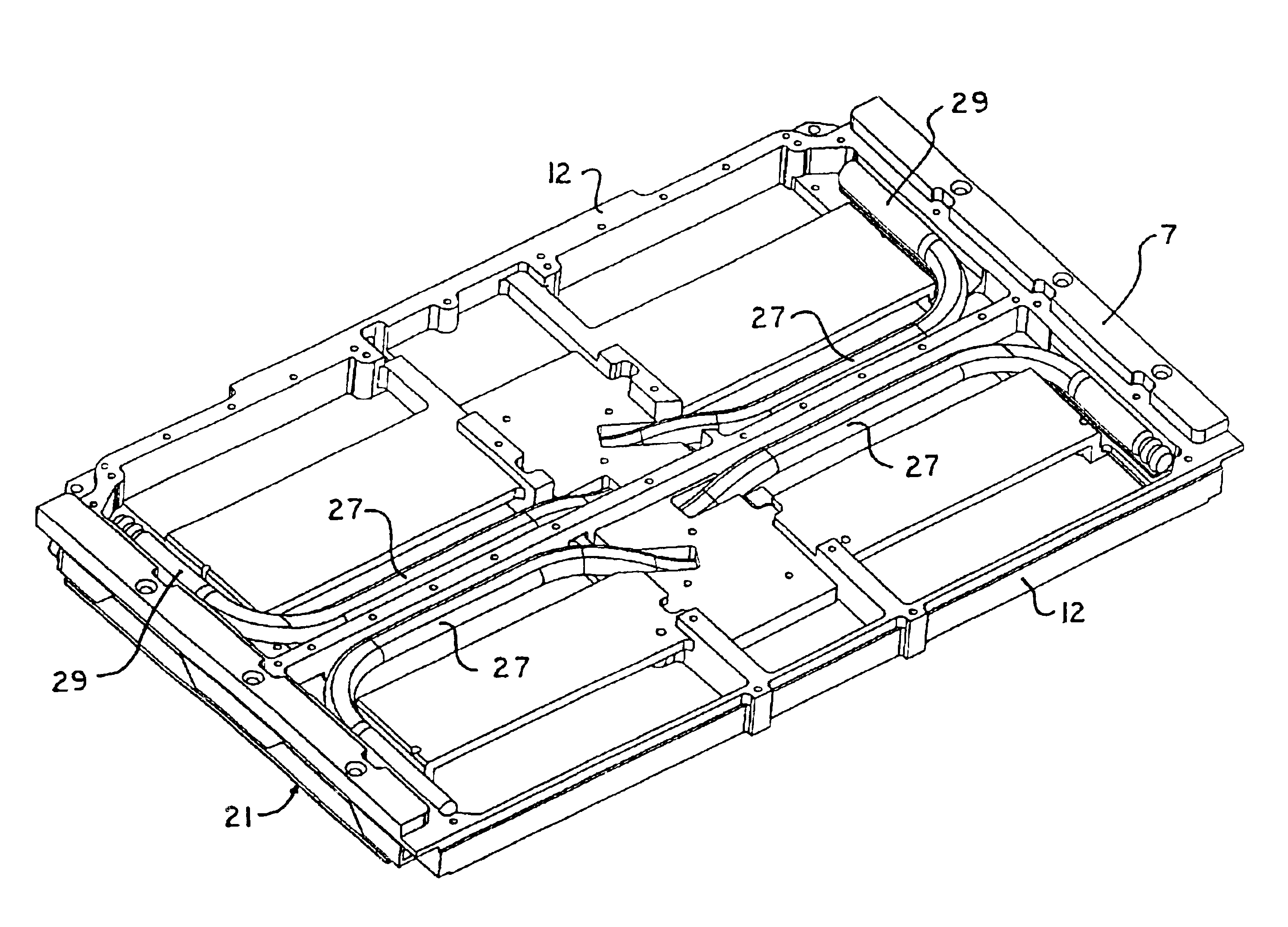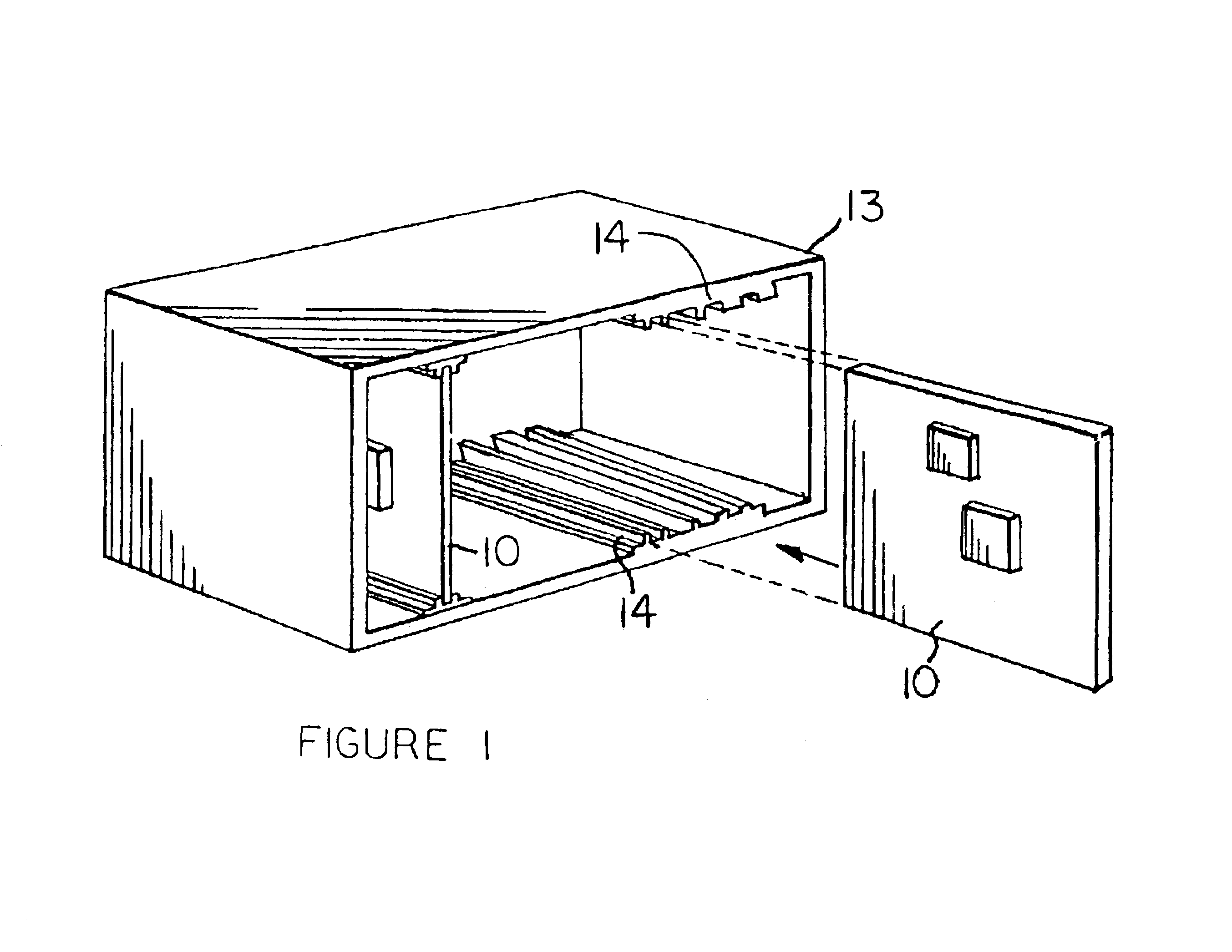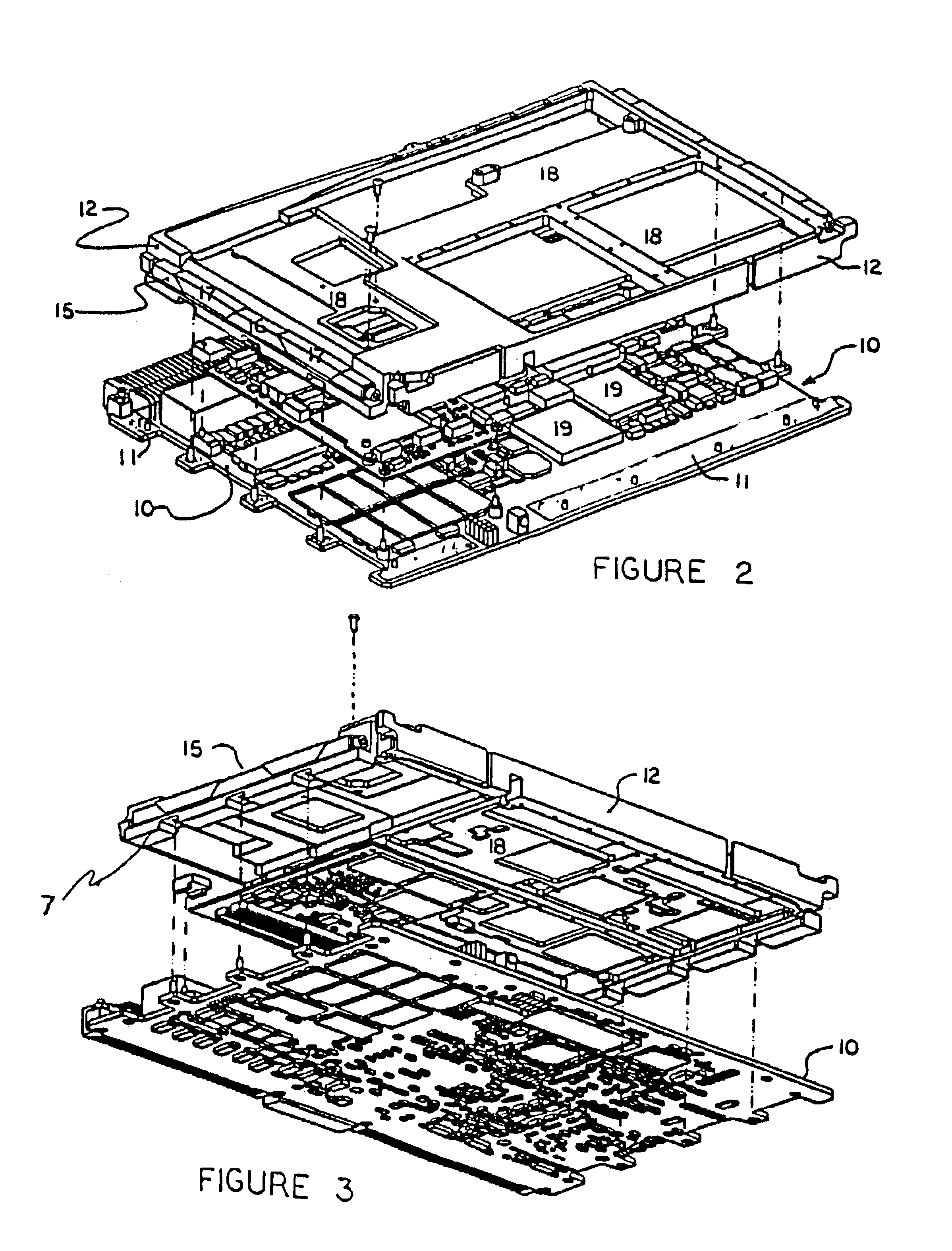Embedded heat pipe for a conduction cooled circuit card assembly
a technology of conduction cooling and circuit card, which is applied in the direction of indirect heat exchangers, electrical apparatus construction details, lighting and heating apparatus, etc., can solve problems such as card and/or system failure, card failure or system failure, improper operation, etc., to reduce electromagnetic radiation and improve signal integrity
- Summary
- Abstract
- Description
- Claims
- Application Information
AI Technical Summary
Benefits of technology
Problems solved by technology
Method used
Image
Examples
Embodiment Construction
The condenser portion of the heat pipe 29, the area of condensation inside the pipe, is attached to the frame structure along the card edge. A bonding agent, such as tin-lead solder or another thermally conductive adhesive, is used to adjoin the two components, the heat tube condensation end 29 and the end of the frame 12. The opposite end of the heat pipe, the evaporator portion 31 (area of evaporation inside the pipe), is embedded within a heat spreader 26 also referred to as the collector 26. Elements 26 and 31 are better illustrated in FIG. 7.
The collector 26 can also house a second heat pipe 27 that extends to the opposite edge of the frame 12. A redundant configuration, two heat pipes extending in opposite directions, as illustrated in the preferred embodiment herein, provides proper operation in all orientations of the CCA. Because the CCA are often used in demanding environments under challenging conditions, the orientation of a card at will not remain constant. Therefore, p...
PUM
 Login to View More
Login to View More Abstract
Description
Claims
Application Information
 Login to View More
Login to View More - R&D
- Intellectual Property
- Life Sciences
- Materials
- Tech Scout
- Unparalleled Data Quality
- Higher Quality Content
- 60% Fewer Hallucinations
Browse by: Latest US Patents, China's latest patents, Technical Efficacy Thesaurus, Application Domain, Technology Topic, Popular Technical Reports.
© 2025 PatSnap. All rights reserved.Legal|Privacy policy|Modern Slavery Act Transparency Statement|Sitemap|About US| Contact US: help@patsnap.com



